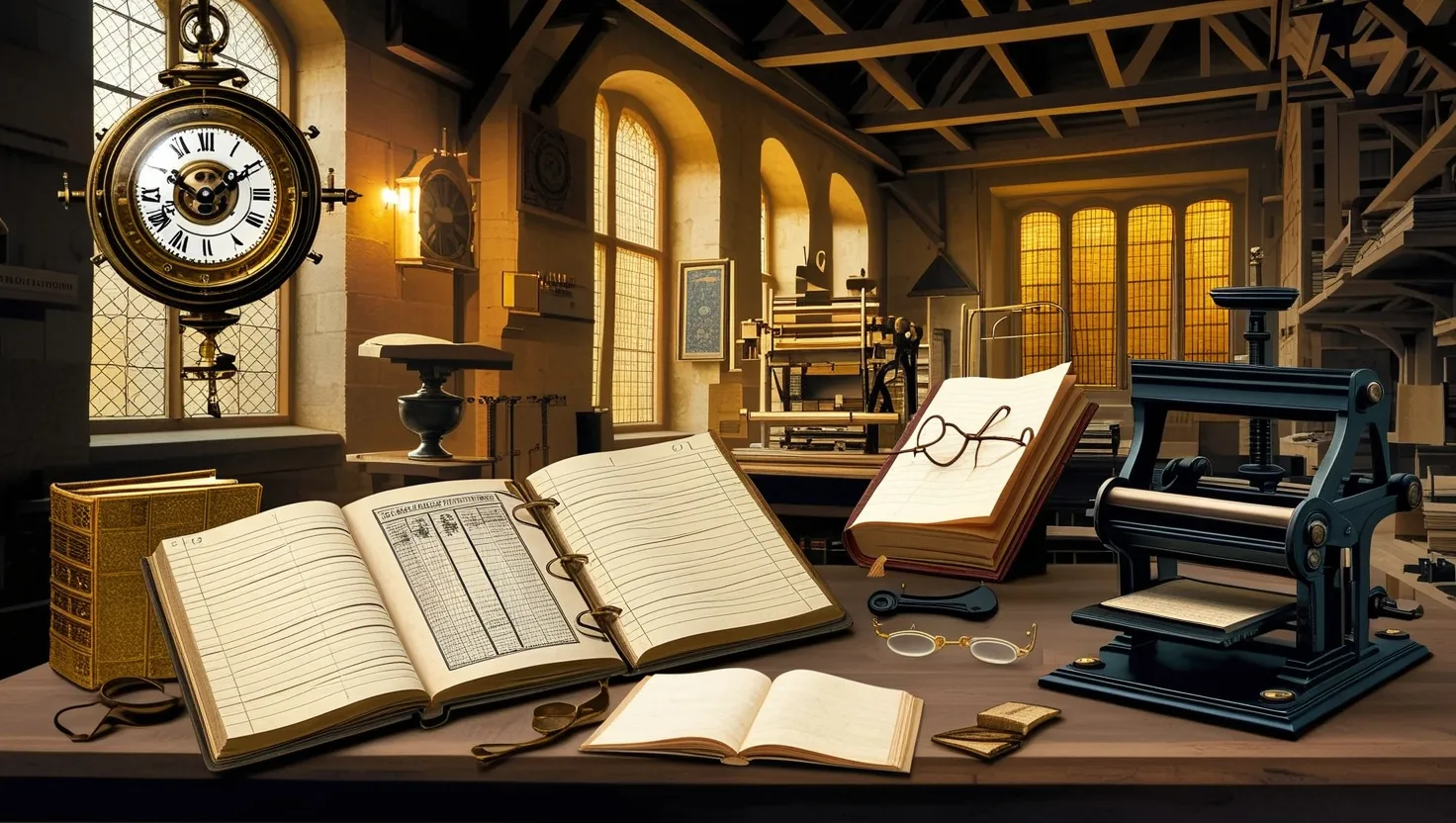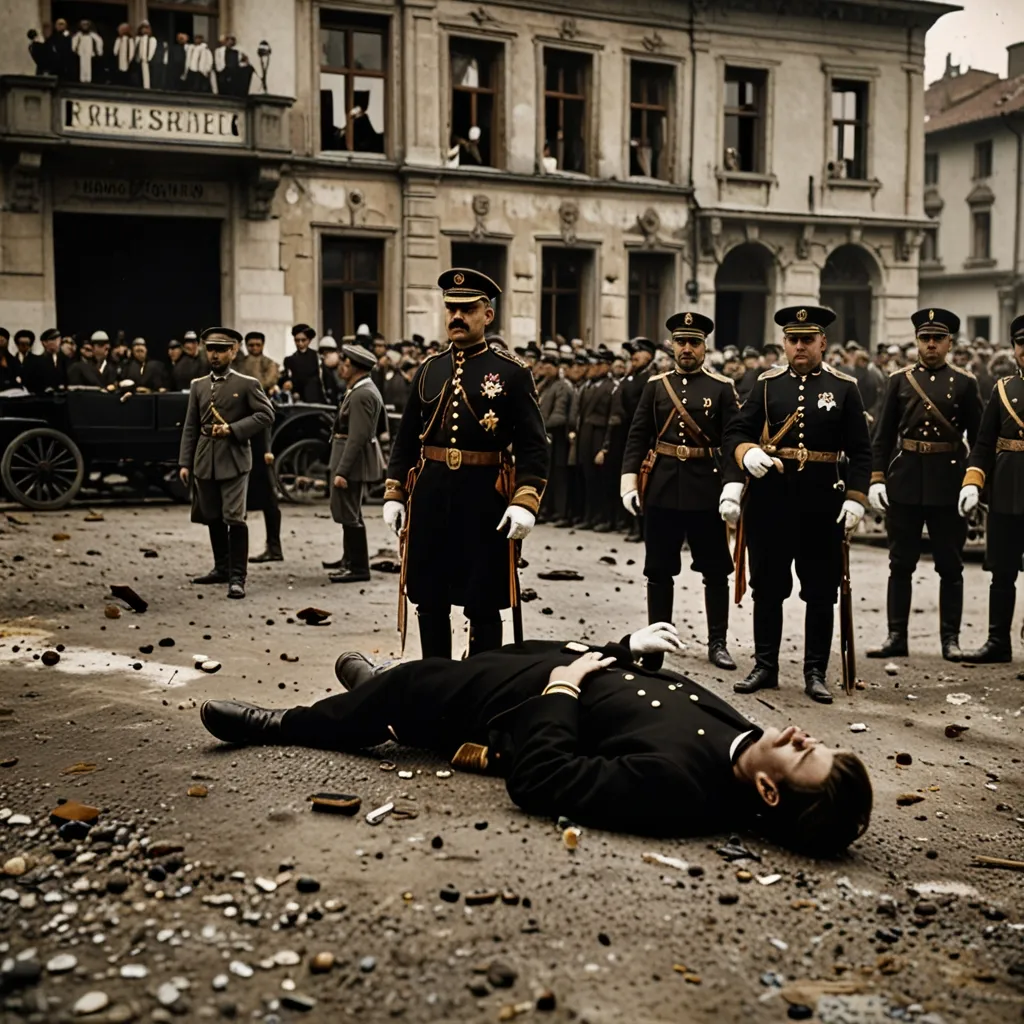The Middle Ages, often unfairly labeled as the “Dark Ages,” were in fact a crucible of innovation that laid the groundwork for our modern world. While we may picture medieval Europe as a place of superstition and stagnation, it was actually teeming with inventive minds who crafted ingenious solutions to the challenges of their time. These innovations didn’t just improve life for medieval people - they fundamentally reshaped society in ways that continue to influence us today.
Let’s start with one of the most transformative inventions of the era - the mechanical clock. Developed around the 13th century, these early timekeeping devices marked a radical departure from the sundials and water clocks that came before. For the first time, people could reliably measure equal hours regardless of the season or time of day. This seemingly simple advance had profound ripple effects across society.
Imagine living in a world where the length of an hour changed depending on the time of year. That was the reality before mechanical clocks. The new devices allowed for standardized work schedules, more precise navigation, and eventually the concept of punctuality itself. Clocks became the heartbeat of urban life, with town squares often centered around a clock tower. The tick-tock rhythm began to shape how people thought about and structured their days.
As the renowned historian Jacques Le Goff observed:
“The clock is not merely a means of keeping track of the hours, but of synchronizing human actions.”
This synchronization was key to the rise of modern commerce and industry. Without reliable timekeeping, how could you coordinate complex business operations or run a factory efficiently? The medieval clock laid the foundation for our time-obsessed modern world.
But clocks weren’t the only medieval innovation shaping how we think and learn. The university system, which emerged in Europe during this period, established educational structures we still rely on today. Institutions like the University of Bologna (founded 1088) and Oxford (1096) pioneered concepts like degree programs, faculty governance, and scholarly research.
These early universities created a model for organizing and advancing human knowledge that has proven remarkably durable. The basic structure of lectures, seminars, examinations, and academic degrees would be instantly recognizable to a medieval scholar transported to a modern campus.
How might our approach to education be different if universities hadn’t developed during the Middle Ages? It’s an intriguing question to ponder.
The medieval period also saw advances in how we track and manage wealth - innovations that would prove crucial to the later development of capitalism. Double-entry bookkeeping, first documented in Italian trading centers, revolutionized accounting and finance. This system, which records every transaction as both a credit and a debit, allowed for much more accurate and comprehensive financial records.
While it may sound dry, double-entry bookkeeping was a game-changer. It enabled the growth of banking, facilitated long-distance trade, and eventually formed the basis of modern accounting practices. Without it, the complex financial systems that underpin our global economy simply wouldn’t be possible.
As the 15th-century mathematician Luca Pacioli wrote of double-entry bookkeeping:
“Without it, the merchant would grope his way forward like a blind man and great disorders might arise in business affairs.”
His words proved prophetic, as this medieval innovation became an essential tool for managing increasingly complex commercial enterprises.
But not all medieval inventions were about abstract concepts like time and money. Some had very tangible, life-changing impacts for ordinary people. Take eyeglasses, for instance. Developed in Italy around 1290, these simple pieces of curved glass dramatically extended the productive years of scholars, craftsmen, and anyone else who relied on close vision.
Before eyeglasses, failing eyesight often meant the end of a career for those in detail-oriented professions. Now, people could continue working and reading well into old age. This not only improved quality of life for millions but also allowed for the preservation and transmission of knowledge and skills across generations.
The principles behind eyeglasses would later be applied to create other optical instruments like microscopes and telescopes, tools that proved essential to scientific advancement. In this way, a practical medieval invention to help aging craftsmen see their work more clearly ended up opening entirely new realms of discovery.
Perhaps the most famous and impactful medieval innovation came near the end of the period - Gutenberg’s printing press with movable type, perfected around 1450. While earlier forms of printing existed, Gutenberg’s method allowed for the mass production of books at a previously unimaginable scale.
The effects were revolutionary. Books, once rare and expensive items hand-copied by monks, suddenly became affordable and widely available. This democratization of knowledge accelerated literacy rates, enabled scientific collaboration, and facilitated the spread of new ideas across Europe.
The printing press didn’t just change how information was disseminated - it changed how people thought. As more people gained access to books, new forms of individual and critical thinking emerged. The press laid the groundwork for the scientific revolution, the Enlightenment, and eventually modern concepts of democracy and human rights.
As the philosopher Francis Bacon noted:
“Print is not merely a speaking picture, but is something between a speaking picture and a living creature, having a virtue and force to beget the like in other minds.”
This “force to beget the like in other minds” would prove transformative, reshaping European society and eventually the world.
These five innovations - the mechanical clock, the university system, double-entry bookkeeping, eyeglasses, and the printing press - demonstrate the profound impact medieval ingenuity continues to have on our lives. They remind us that periods often dismissed as backward or unenlightened can in fact generate transformative technologies whose impacts reverberate across centuries.
So the next time you check your watch, attend a lecture, balance your checkbook, put on your reading glasses, or pick up a book, take a moment to appreciate the medieval minds that made these everyday actions possible. Their creativity and problem-solving skills laid the foundations for much of what we consider “modern” today.
What other medieval innovations might we be overlooking? How might our world be different if these key inventions hadn’t emerged when they did? By exploring these questions, we gain a richer understanding of how the past continues to shape our present and future.
The Middle Ages were far from dark - they were a time of light, learning, and leaps forward in human knowledge and capability. The innovations of medieval Europe continue to illuminate our world today, a testament to the enduring power of human ingenuity across the ages.






